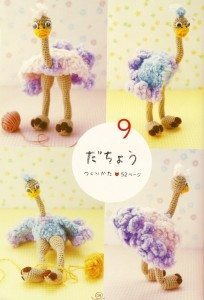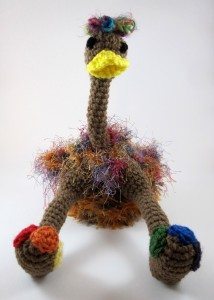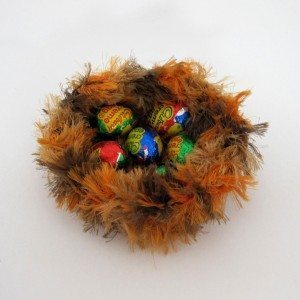The little dachshund from amigurumi class wanted a bit more prettying before going out into the world. Specifically, he wanted a black and tan color scheme.
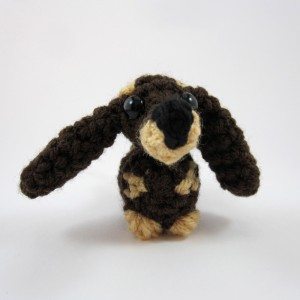
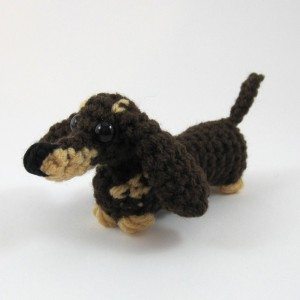
Dachshund pattern
The instructions should make it easy to do this color scheme or a monochromatic dog.
My brother and his family have a black and tan dachshund who is bestest friends with their cat. The got the cat in mid-December and the dog in early January, and they play together, nap together, and get into trouble together. This dachshund is in honor of them, and if I decide the world doesn’t have enough amigurumi cats after all, maybe I’ll add a cat to the mix too.
This ami has a companion document as well, a four-page pdf that attempts to distill all the necessary information for making amigurumi (beyond the basic crochet stitches) into one easily printed location. Here’s the table of contents.
- Making and tightening the double magic ring; color changing both generally and in a magic ring.
- Using stitch markers; working in confined spaces and around stuffing; making and comparison of different single crochet decrease techniques.
- Spirals versus joined rounds; closing the end of a piece and hiding the yarn; pinning completed crochet pieces together.
- Embroidering on crochet; making the French knot and bullion knot; securing and hiding contrasting floss or yarn; slip stitching a new piece of yarn on to add a small feature.
All of this information is available freely online, but I wanted to put it together in one concise document for reference purposes. It is sold separately and is usable without the dachshund, but the example photos are all of the dachshund.
